The structure of a coffee cherry
A coffee cherry looks simple on the outside, but inside it hides several layers, each with an important role in the development of flavor.
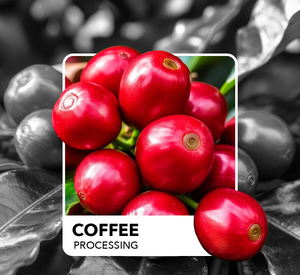
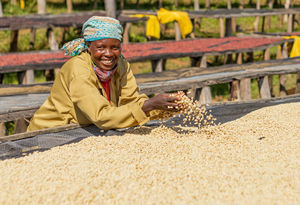
Washed Processing
Washed processing is one of the cleanest and most controlled methods of coffee processing. After harvesting, the fruit is peeled and the pulp is almost completely removed. The beans are left covered in a thin layer of mucilage, which is fermented and then washed with clean water, before the beans are dried in the sun or in mechanical dryers. The result is a coffee with high clarity, vibrant acidity and a clean, precise aroma.
This method highlights the terroir — that is, the place of origin and the particularities of the variety — more than any other process.
In the cup, a MABÓ washed coffee greets you with floral, citrus or stone fruit notes , an elegant texture and a clean finish. It is the pure expression of its origin.
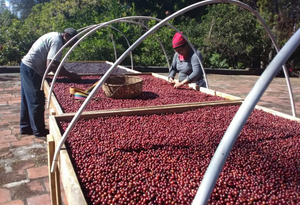
Natural Processing
Natural processing is the oldest and probably most instinctive method of processing coffee. The cherries are left whole, with pulp and skin, to dry slowly in the sun, spread out on African beds or mats.
As the water evaporates, the sugars and compounds from the fruit penetrate the bean, providing an intense sweetness and rich aroma. After drying, the outer layers are mechanically removed, leaving only the coffee bean. The natural processing offers a vibrant, often surprising experience, with uneven accents that give it charm.
It's a method that brings a touch of unpredictability , but also a sensory fullness that's hard to match. A natural coffee in the MABÓ cup is round-bodied, pronouncedly sweet, and fruity —often berry, plum, strawberry, or chocolate —and speaks of sun, time, and patience —an authentic expression of where it comes from.
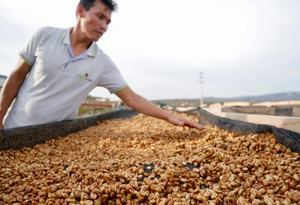
Honey Processing
Honey processing is an intermediate method between washed and natural — a careful balance between clarity and sweetness.
After harvesting, the cherries are peeled, but some of the sweet, sticky mucilage intentionally remains on the berries.
These are then left to dry in the sun, turned regularly for even drying. Depending on the amount of mucilage left on the beans, the process can range from Yellow Honey (the cleanest and most delicate) to Red or Black Honey (the sweetest and most complex). The result is a coffee with a velvety body , balanced sweetness and aromas of honey, caramel and ripe fruit . The honey processing retains the clarity of a washed coffee, but adds a layer of depth and texture. It is a method that perfectly reflects the MABÓ philosophy — a balance between precision and expressiveness , between control and freedom.

Anaerobic Processing
Anaerobic processing is one of the most modern and experimental techniques in the world of specialty coffee. After harvesting, the cherries — whole or peeled — are placed in airtight tanks , where fermentation takes place without oxygen . This lack of air allows the development of microorganisms different from those in classic fermentation, and the result is a completely new aromatic profile. During the process, temperature and time are carefully controlled, and fermentation can last from a few hours to a few days.
After that, the coffee is dried in the sun or in special dryers. In the cup, an anaerobically processed coffee offers intense and complex aromas – notes of exotic fruits, sweet wines or spices , sometimes even an effervescent texture. It is a method that brings a new dimension to taste, a balance between science and instinct , between control and surprise. For MABÓ, anaerobic processing is the expression of curiosity — the desire to explore and push the boundaries of taste .

Carbonic Maceration
Inspired by the world of wine, carbonic maceration is one of the most spectacular forms of modern processing.
Whole coffee cherries are placed in airtight tanks filled with carbon dioxide , which slows fermentation and completely changes the dynamics of reactions inside the fruit. In this controlled environment, natural enzymes in the pulp and mucilage break down the sugars in a unique way, infusing the bean with complex notes of tropical fruit, fine spices and vibrant acidity . The process can take anywhere from 24 hours to over a week, depending on conditions and the farmer’s intent. The result is a coffee with an intense, aromatic and layered profile , combining ripe sweetness with an almost vinous elegance.
In the cup, you can expect an unusually fragrant, ample and memorable experience. For MABÓ, carbonic maceration is an art form — scientific precision transformed into pure emotion in the cup .

Extended or Controlled Fermentation
Extended fermentation is a method that takes coffee processing into an almost scientific realm of fine-tuning .
After harvesting, the peeled cherries or berries are placed in tanks or basins, where time, temperature and oxygen levels are carefully monitored and adjusted. The aim is to perfectly control the natural reactions between the sugars and microorganisms in the pulp, prolonging the fermentation to amplify the sweetness and complexity of the aromas. Instead of a spontaneous and rapid fermentation (12–24 hours), here the process can take 48, 72 or even over 100 hours , depending on the desired profile. The result is a coffee with a refined aromatic profile, exceptional clarity and a depth that maintains the balance between sweetness and acidity. In the cup, a coffee processed through controlled fermentation offers clean, fruity, floral or winey notes , without excesses — a balance between nature and human precision . For MABÓ, this method is the expression of curiosity and discipline — a perfect example of how science can be put at the service of emotion.
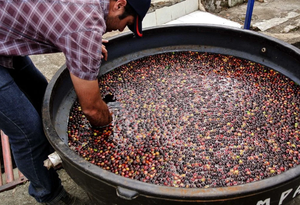
Thermal Shock Processing
Thermal Shock Processing is one of the latest innovations in specialty coffee, designed to maximize aromatic complexity through a controlled interplay of temperatures. After the initial fermentation of the cherries, the beans are exposed to rapid temperature changes – from hot to cold water – to stop fermentation at the ideal moment and lock in the flavors in the bean. This thermal shock controls enzyme activity and stabilizes the aromatic compounds, resulting in a coffee with intense, clear and layered flavors . The resulting profiles can be spectacular: tropical fruits, wine notes, sweet flowers and a creamy texture . In the cup, a Thermal Shock processed coffee surprises you with its depth of flavor and impeccable clarity – a demonstration of how innovation can take tradition further. For MABÓ, this method represents the courage to experiment with science, but also with soul .
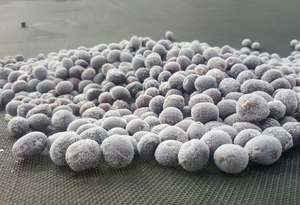
Diversity of processing – science, instinct and emotion
Processing is an essential step in the coffee journey — the place where nature and man meet. From traditional methods, such as washed and natural , to modern and experimental ones, such as anaerobic fermentation or thermal shock , each process tells a story of origin, intention and curiosity . There is no “best” method, just different ways to express the personality of a bean . In the right hands, each process becomes an art form: a combination of precision, patience and sensitivity. For us, at MABÓ , processing is more than a technique — it is a conversation with the raw material. All with one goal: to transform each cup into an experience for you — the one who feels, chooses and shares the spirit of MABÓ.



